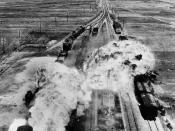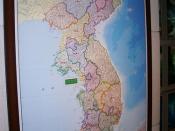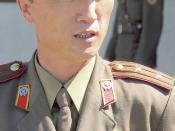1903-1945: Korea Under Japanese Rule Only fragments remain of Korea's early film history. The vast majority of Korea's early film footage was destroyed in the 1950s during the Korean War, and not a single feature produced before 1945 survives in complete form today. Nonetheless, historical records paint a picture of a lively and creative industry that produced over 160 features from the early twenties until Japan's surrender to Allied forces in 1945.
From 1909 to 1920, a series of theaters were built in Seoul and in regional cities such as Pusan and Pyongyang. Most of these theaters were owned by Japanese businessmen, but a few Korean theater owners built up a significant amount of capital screening European and American imports. This capital would eventually be used to help finance the first domestic productions. Korea's first film (The Righteous Revenge), a kinodrama in which actors performed against the backdrop of a projected feature, debuted at Seoul's Dansongsa Theater in 1919.
The public reportedly loved the show, but the long-term success of this and other kinodramas was hampered by intellectuals who criticized the mixed-media form as an insult to both theatre and film.
Korea's first silent feature was produced in 1923, and over the next few years, seven Korean film companies would appear. The masterpiece of this era is considered to be Na Un-Kyu's Arirang (1926). Na, only 25 years old at the time, produced, directed and starred in this film about a man who is arrested and tortured by Japanese police. The title is taken from a popular folk song, which would become an anthem of sorts for the Korean independence movement. The film, admired for its aesthetic qualities as well as for its political message, became an inspiration for a wave of young filmmakers who hoped to make films based...


